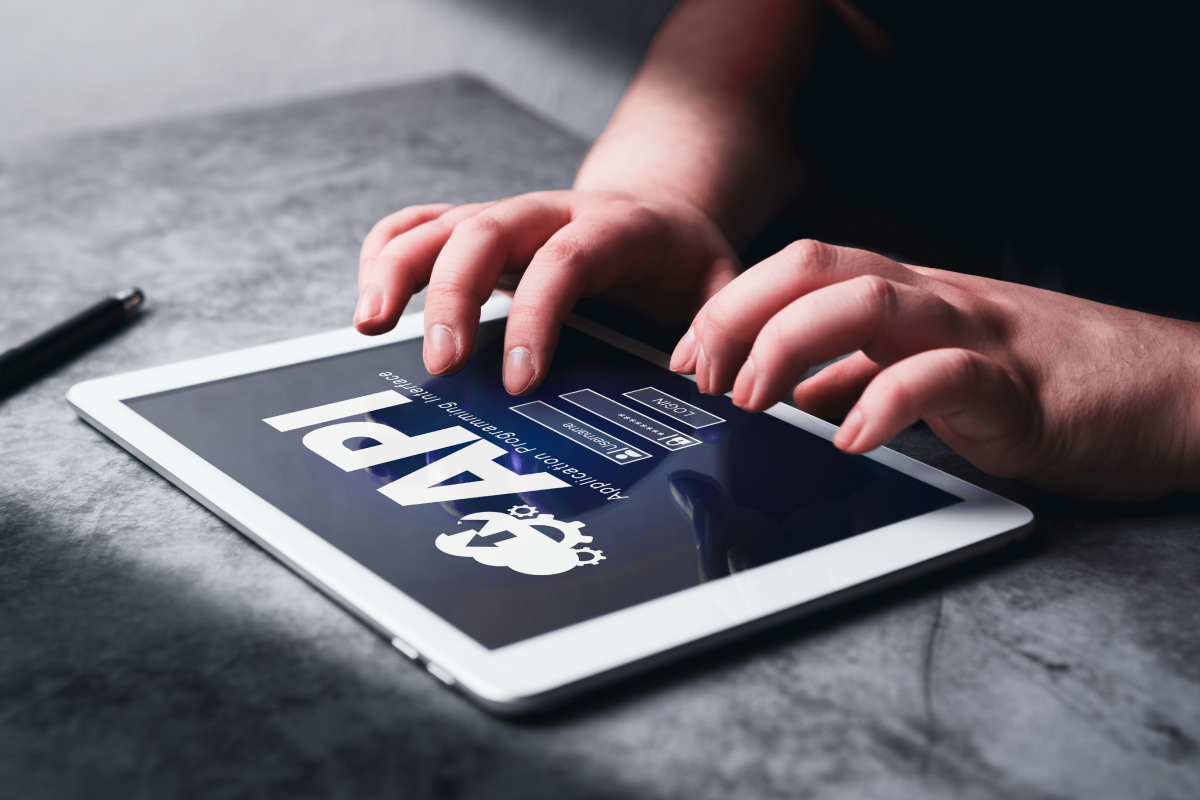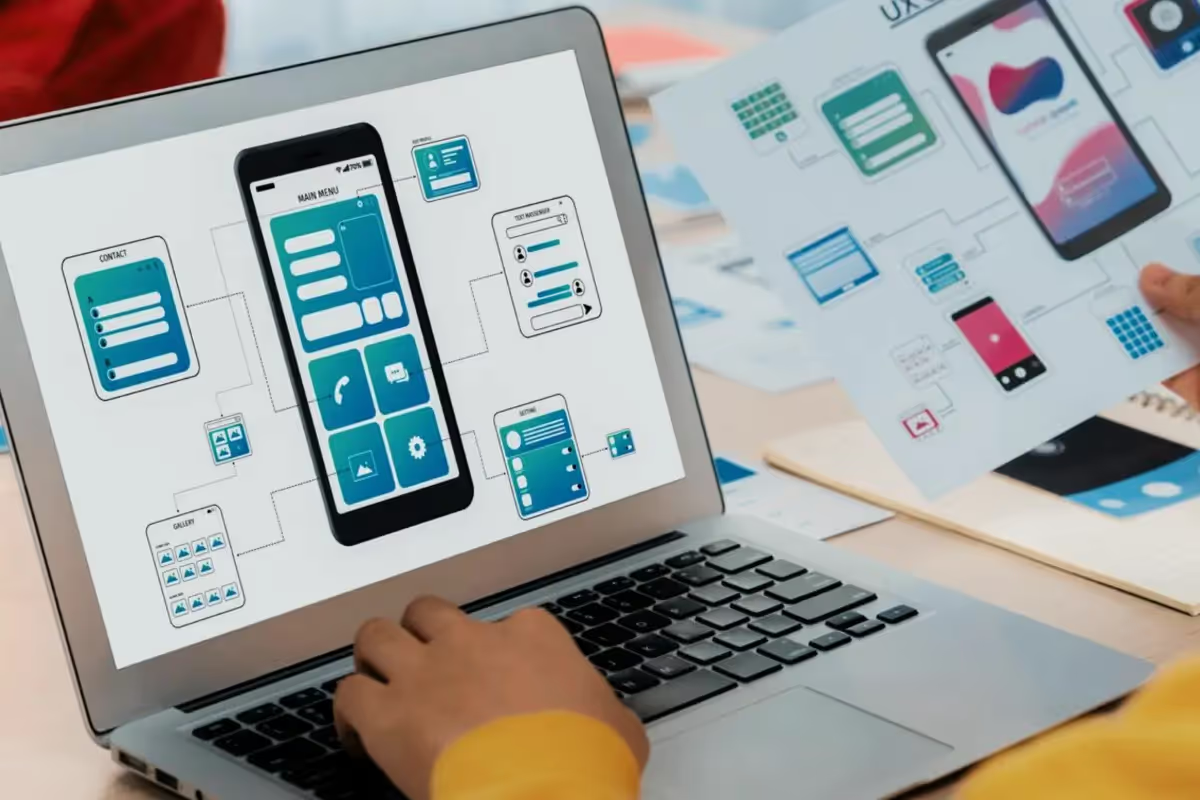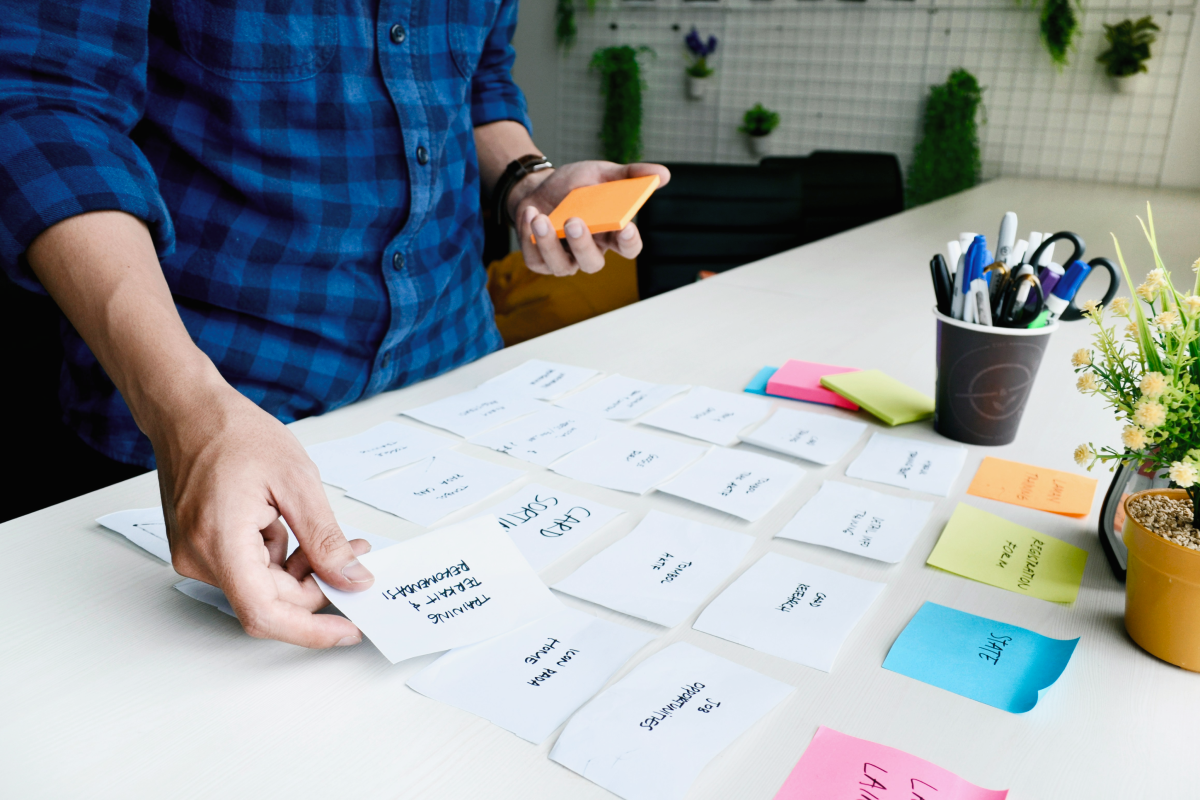Sending money used to require queuing up in banks, filling out forms, and waiting several business days — before the recipients got their money. Not anymore. With payment apps, users can send money with a few taps, with the other party receiving the funds almost immediately.
Thanks to its convenience, the global market size for mobile payment might hit $9.4 billion by 2025, almost double the $5.1 billion mark in 2021. With growing demand, fintech startups and global financial institutions alike seek ways to produce their own payment apps. However, learning how to create a money transfer app is not easy.
I’m Yan Likarenko, Uptech’s project manager. I’ve overseen dozens of app developments, including payment apps for fintech clients worldwide, like Cardless. Developing payment apps goes beyond putting together beautiful layouts and payment features. It requires strict compliance with data privacy, security, and financial acts enforced by regional authorities.
In this guide, I’ll show you:
- How to make a money transfer app from scratch;
- Important security and compliance considerations;
- Key features, trends, and costs in building the app.

How Do Money Transfer Apps Work?
Money transfer apps, or P2P payment apps, are mobile apps that allow consumers to send funds without an intermediary party. Instead of transferring money through banks, users can download a mobile transfer app and send money through a recipient’s email or phone number.
Like banks, a money transfer app requires users to verify their identities before transferring funds. However, payment apps don’t impose costly charges as traditional banks do. Moreover, transferring funds is simple once users are signed up.
Here’s how it goes.
- Connect the payment app’s e-wallet to a banking account.
- Deposit an initial amount to the payment app.
- Indicate the recipient’s details (phone, email, name)
- State the amount to transfer.
- Confirm the transfer.
These days, money transfer apps provide financial features that rival their conventional banking counterparts. For example, users can
- pay bills,
- track expenses,
- receive funds in different currencies,
- generate transaction reports.
What Are The Types Of Money Transfer Apps?
While they serve a common purpose, money transfer apps differ according to their implementation.
Mobile OS payment
Apple Pay and Android Pay are examples of P2P capabilities built into mobile operating systems. These payment systems use NFC technologies to enable users to transfer funds quickly with a supported payment device. You can also purchase credit cards like Apple Card to enjoy special perks when paying. The limitation, however, is that users cannot transfer funds to other payment apps.
Independent services
These are non-traditional digital payment providers that allow users to transact securely with mobile apps. They enable users with limited access to financing facilities to send and receive money as bank customers do. For example, PayPal, Wise, Venmo, and Alipay are independent P2P payment apps.
Online banking services
Not wanting to be left out in the fintech revolution, some conventional banks have digitized their services and support P2P payments. For example, Bank of America, JP Morgan, and Capital One provide e-wallets that integrate with P2P providers like Zelle.
How To Create A Money Transfer App: 8 Steps to Full Development Cycle
Careful planning, implementation, testing, and support ensure successful online payment transfer app development. These are the steps our software team follows.

Step 1: Conduct business and technical analysis
Business analysis part
As P2P payment becomes increasingly popular, competition is stiffer. Therefore, it’s essential to ensure there’s a demand for your money transfer app. Conducting competitor analysis, surveying potential users, and interviewing other stakeholders help determine product-market fit.
For example, PayPal and Wise are dominant P2P payment providers, but there are niche markets that startups could fill. Some users might want a payment app that comes with food delivery services or one that allows them to invest their money.
Technical analysis part
After confirming business viability, we explore technical considerations and challenges in developing the app. Through the exercise, we identify tech stacks, security, compliance, infrastructure, and other technical aspects that our software team should be mindful of.
P2P payment apps require different software technologies to build. For example, our app developers use Swift and Kotlin to create iOS and Android native apps, respectively. Meanwhile, we use Node.JS to develop the backend solutions.
Besides programming languages and development frameworks, choosing a cloud infrastructure provider is also essential. We host the app on AWS or Google Cloud to ensure scalability, resilience, and availability.
Learn more about our tech stacks here.
Step 2: Design the app
Before starting with actual development, we visualize the user journey with mindmaps and wireframes. Get feedback from potential users to guide your developers. You can do so with this UI/UX product design process and the best practices we use at Uptech.
A poorly designed app will result in low sign-up and high churn rates. Conversely, a user–friendly app with good UI/UX elements allows users to transfer money and manage their funds efficiently. So, pay attention to screen layouts, graphics, text, colors, navigation, and mobile-friendliness when building the app.
For example, we applied clear in-app activities and seamless workflows to help users manage their portfolios in this investment app. As a result, users are pleased with the app's simplicity and ease of viewing key investment metrics.
Step 3: Plan the development
Developing a payment app requires a team of multi-disciplinary software experts. Often, your team will consist of:
- Mobile app developers;
- Backend developers;
- Project manager;
- Business analyst;
- QA engineer;
- Security experts.
The question is — what’s the best way to work with them? Some companies hire their own development team for complete control and flexibility. However, hiring in-house requires training, managing, and retaining the developers.
We have a comprehensive article where we explain how in-house development differs from outsourcing. Check it out to learn the pros and cons of both and decide which approach will bring more benefit to your business.
Meanwhile, others outsource their payment app development to IT partners like Uptech. This allows them to quickly test their ideas in the market without committing to the technicalities of development. Moreover, outsourcing will enable you to collaborate with top talents at an affordable fee.
Once you’ve chosen a collaboration model, define your app requirements. Consider essential features, project goals, and expectations of respective stakeholders. Then, map out the timelines for important milestones in building the app. This ensures you’re on track to meet the release date and align with your marketing efforts. For example, you need to allocate time for testing and revising different modules in the app.
Step 4: Develop the app
Now, the actual development begins. Developers build upon the design wireframe and specifications. They code the features, functionality, and other services the app requires. While doing that, they ensure that each feature works seamlessly with others, considering security, user journey, and business logic. As payment apps process financial data, security is a top priority, and we’ve dedicated an entire section to it below.
Different teams work parallelly on various aspects of the app. For example, backend developers will focus on building server-side services while mobile developers build on-screen functionalities for the prototype. It’s important to keep the team aligned with the agreed milestones to prevent confusion and delays.
At Uptech, we use the Agile methodology to test and iterate changes quickly. This way, we can produce functional apps while reaching the market on time. Our approach also allows us to address challenges and limitations early on.
Step 5: Integrate third-parties
Often, a payment app requires functionalities beyond peer-to-peer money transfer. Yet, this doesn’t mean you should build other additional functionalities or services the app requires. Integrating with third-party services is faster. It lets you focus on developing the app’s business-specific workflow instead of reinventing the wheel.
For example, you can integrate with
- Bill payment systems like QuickBooks or Bill.com to automate invoice processing.
- KYC providers like Onfido and Refinitiv enable user verification.
- Visa and Mastercard to support credit card usage.
- Banks and ATM networks to enable cash withdrawals or deposits.
- Anti-money laundering (AML) services to automatically detect and block suspicious transactions.
- International exchange gateway for allowing users to send or receive money in different currencies.
Step 6: Test the app
Bugs, technical issues, and security flaws in payment apps can result in monetary losses, data breaches, and other business setbacks. So, test the app thoroughly before releasing it. Put the app through unit, functional, acceptance, and regression tests to detect possible issues. For each test, it’s important to cover all features and use cases. We do this by creating test cases consisting of steps to identify possible defects and issues. Then, we fix and retest the affected software module to ensure it is past the test requirements. You can learn more about our software testing process here.
Step 7: Release the app
After fixing all software issues, we plan for deployment. This involves setting up the database, cloud infrastructure, and other resources the payment app requires. Launch the backend services and ensure they operate smoothly. Then, we release the mobile payment app on marketplaces like App Store and Play Store.
Step 8: Provide after-launch support
Be on alert for possible issues after releasing the app. Your support team must quickly respond to support requests and gather feedback for further improvement. Providing a comprehensive FAQ page or a generative AI assistant can lighten the support workload.

Security and Compliance in Money Transfer Apps Development
When developing money transfer apps, fintech companies face tremendous security risks. Cyberattacks, data breaches, and other malicious attempts can be costly. For example, businesses in the US lost an average of $9.44 million in 2022 for a single data breach.
There’s no room for complacency in securing P2P payment apps from vulnerabilities and threats. Customers expect robust payment security measures to transact with peace of mind. As the solution provider, you must comply with regulations enforced by global, regional, and national authorities.
Data security acts
When developing the money transfer app, ensure your app is compliant with these data security acts and standards.
- General Data Protection Regulation (GPDR)), is a data privacy law that applies to fintech providers in the European Union. The act regulates how financial app stores, uses and share user data.
- Know Your Customer (KYC) consists are mandatory guidelines that all financial apps must apply to verify their users. It supports the government’s efforts in enforcing anti-money laundering (AML) laws. Depending on the region, acts enforcing KYC differ. In the US, all financial firms must implement KYC to comply with the Banking Secrecy Act.
- Gramm-Leach-Bliley Act is a regulation enforced by the FTC to protect user data. It requires fintech companies to identify security risks and implement mitigative measures.
- Payment Card Industry Data Security Standard (PCI DSS) is a mandatory act to comply with if your app processes credit card data. A slight non-compliance can result in a hefty fine.
- The Electronic Fund Transfer Act (EFTA) is an act that regulates peer-to-peer payment transfers. It requires a payment app to protect users in events of wrongful fund transfers.
Besides complying with mandatory acts, it also helps to apply additional measures to strengthen security.
- Certifying the product with ISO 27001, a global standard for implementing and maintaining security for information management systems.
- Applying ARMA, a framework that covers a broad range of data governance, including risk mitigation.
- Assessing security risks throughout the customer lifecycle with services like Unit21.
Non-compliance can result in hefty penalties, loss of trust, and restriction from operating in certain regions. To comply with the acts mentioned, you need to perform compliance checks throughout the entire development lifecycle. This prevents costly rework at a later stage.
At Uptech, we deploy several measures to protect your customer data and comply with various data privacy acts.
Multifactor authentication
Multifactor authentication (MFA) is a user verification process that uses two or more identifying tokens. It helps you protect your app users from unauthorized attempts. For example, when your app users accidentally reveal their password, their account is still protected because hackers don’t possess the second token. At Uptech, we can implement MFA for your financial app by requiring users to sign in with a second token, such as
- Biometrics scans
- One-time password
Encryption
Encryption is a software algorithm that scrambles financial data so hackers cannot misuse them. By encrypting data collected, stored, and by the payment app, you can prevent your app users from falling victim to cybercrimes and losing money. At Uptech, we use advanced encryption libraries from Tink, Jetpack Security, and Bouncy Castle to provide robust data protection.
User-Centric Features and Integrations for Money Transfer Apps
Over the years, fintech companies have released P2P payment apps that target different market segments. Yet, all successful apps are user-friendly, engaging, and helpful.
Let’s check out a few features that your payment app must have.

Intuitive onboarding
Creating an account should be effortless. While complying with KYC and AML is mandatory, provide step-by-step instructions that guide users in creating their profiles. The sooner you can onboard users, the less likely they’ll abandon the process.
Profile management
Users can easily edit their addresses, contact details, bank accounts, and other supporting information on the app. For example, our investment app lets users add payment methods in simple steps.

E-wallets
Allow users to deposit funds from their credit card or bank to a digital wallet. With e-wallets, users can use the app for contactless transactions at participating merchants.
Send and receive money
Money transfer functionality is a core feature that all P2P payment apps should have. Users can transfer funds to recipients by specifying their email or phone number. Some payment apps also allow sending money to bank accounts or paying bills. More importantly, the process should be intuitive and easily accessible from the dashboard.
Bill payments
The ability to pay bills on their mobile devices makes a money transfer app more attractive to users. To enable this, integrate the app with service providers that support online bill payments.
Transaction records
Users might need to revisit transaction details like the date, fee, recipients, destinations, banks, and payment purposes. The neobank app we built allows users to check their past transactions easily.

Event notification
When transferring funds, users might need to confirm that the recipient has received the money with appropriate notifications. Likewise, getting notified of other events, such as promotions, security updates, and subscription renewals, is also helpful.
Harnessing Generative AI in Money Transfer Apps
Generative AI offers tremendous potential to benefit P2P payment users. When applied to a money transfer app, generative AI can reduce security risks, improve engagement, automate fund management, and more.
Let’s explore several intriguing possibilities.
Fraud detection
Generative AI can identify patterns that indicate misuse, threats, or other suspicious activities in the app. The app can take preventive measures to block a transaction or suspend an account to protect users from falling victims. For example, Twint, a Swiss-based payment app, analyzes real-time transactions with AI to prevent fraud.
Personalized user experience
With more money transfer apps vying for attention, personalization becomes a key differentiation to increase customer retention and loyalty. With generative AI, payment apps can analyze interaction data and turn it into personalized offers, suggestions, or rewards that users find helpful.
AI Chatbots
You can integrate an AI-powered chatbot with the money transfer app to assist users with everyday tasks. Rather than waiting in the queue, users can get immediate responses to common questions, check their balances, generate reports, and more with the virtual assistant.
Here’s how to build an AI chatbot for your customers.
Predictive analytics
By studying users’ spending behavior, AI can predict what their future expenses will look like. Adding this feature into the app allows users to anticipate and plan their budgets.
While generative AI promises to delight your users, several concerns remain:
- Ethical challenges. Generative AI is not perfect and may produce inaccurate results that negatively impact the customers. Also, AI may show bias and make unfair decisions when trained with disproportionate data samples.
- Data scarcity. Most financial data are confidential, which limits the sources you can obtain to train machine learning models. Overcoming this limitation requires special techniques like data augmentation to produce realistic synthetic training data.
- Computing resources. Training a deep learning model from scratch requires immense processing power. Furthermore, it might take several months before the model demonstrates acceptable performance.
Rather than facing the challenges alone, it’s better to partner with a proven generative AI developer like Uptech. That way, you don’t have to repeat the mistakes that others made or be constrained by machine learning limitations. Instead, you can tap into our experience building generative AI-powered apps like Hamlet and Dyvo.
Timeline and Cost for Money Transfer App Development
The cost and time to build a money transfer app varies and depends on several factors.
Feature complexities
If your app requires many third-party integrations, multilingual interfaces, currency exchange, and other advanced features, it’ll take more time and money to build. Conversely, developing a more straightforward app targeting only one platform is cheaper and faster. For example, our team took only 3 months to build and release Cardless for Android users.
Hiring cost
You must hire a team of skilled developers in various disciplines to develop a money transfer app. If you’re employing them in-house to work on the app, your cost might be higher, particularly if you’re based in the US, UK, or Western Europe. Some fintech companies choose to outsource their payment app development to reduce the software project development cost.
Aspiration, a fintech company championing environmental causes, outsourced to Uptech to enjoy quality and affordability.
Generally, here’s what a schedule and cost breakdown for money transfer app development looks like.

To Sum Up
Money transfer apps are fast becoming the preferred payment method. Instead of queuing up in banks, users can transfer funds with a few taps. Developing these apps requires considerations of security, compliance, and features that users find helpful. I’ve outlined the steps to create a money transfer app and the features you should include in the MVP.
With generative AI in the spotlight, I’ve also explored how incorporating the technology can offer more value to your users. More importantly, I’ve underscored the challenges of doing so and suggested possible solutions. This includes engaging an experienced AI developer with a good track record in building fintech apps.
If you want to save time looking for the right development partner, drop us a message. We’ve helped Aspiration, Cardless, and several fintech companies worldwide develop secure, functional, and purposeful payment apps.
Talk to us now.




































































































